My wife and I recently rented a new apartment and decided to treat ourselves by renewing some of our cookware. As regular readers know, I’m pretty specific about the model and make of frying pans and chef’s knives that I use. Less so when it comes to pans and pots.
So we ordered new porcelain eatware and stainless steel cookware from IKEA along with a couple of things we needed for the different areas of our new apartment. One of those items was what I’d now describe as a really good stainless steel pot with a lid.
The pot is part of IKEA’s OUMBÄRLIG series. Apart from the fact that it looks and feels great, it comes with a thick base (with a layer of aluminium between two layers of stainless steel) that heats up quickly and evenly on my Bosch induction stovetop.
Only after a couple of days of cooking, my new stainless steel pot got… stained.
For some reason, it accumulated these cloudy and white stains, which I couldn’t get rid of by cleaning and scrubbing. I tried cleaning it by hand with soapy water, but it didn’t work. I tried in the dishwasher, but that didn’t really help either.
After my two failed attempts to clean this residue off, here’s what my pot looked like:
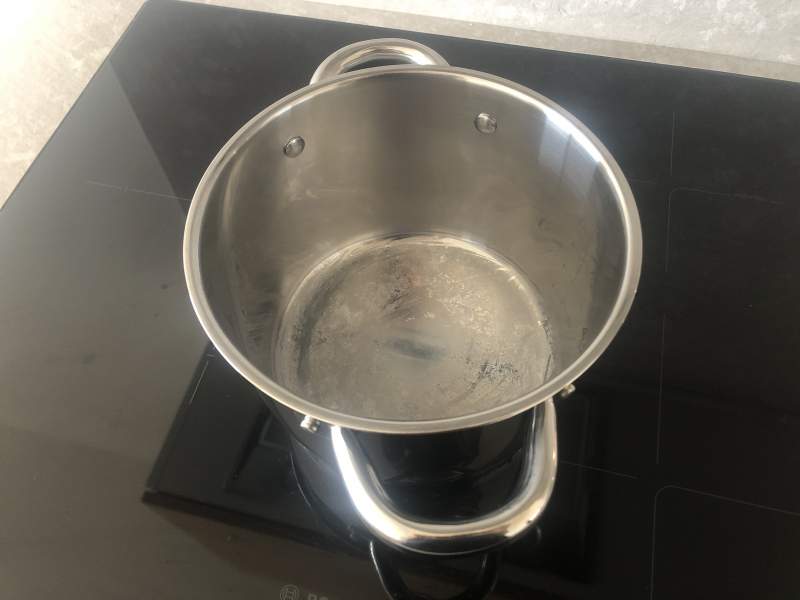
What were these white stains on my brand new pot? Why did they appear there? How could I remove them?
As usual, I started researching the topic on the Internet; much like you’re probably doing right now.
To help your research, here’s what I found.
When calcium and other minerals in your tap water build on on the cooking surface of your pan or pot, white stains can appear. These stains are harmless, but hard to remove by hand or in the dishwasher. The best way to remove them is by boiling a solution of 1 part vinegar and 2 parts water for 1-2 minutes, then giving it a rinse.
Like many of you who are reading this post, my first concern was if this cloudy and chalky white residue was harmful. After an hour or so spent reading articles on various cooking sites, my conclusion is that it isn’t. The good news is that it’s more of an aesthetics problem than it is a hygiene or health one.
But if you like your stainless steel cookware clean and shiny, that isn’t really great news either. Here’s the method I used to remove them from my pot—and how it turned out.
How to Remove White Stains from Stainless Steel Cookware
Time needed: 10 minutes
Because of calcium and other minerals contained in tap water, chalky white residue can build up on the surface of your stainless steel cookware. The cookware is safe to use and this is only an aesthetics problem. If you like your cookware clean and shiny, here’s how to get rid of the residue using one of the simplest household staples of them all: vinegar.
- Make sure your frying pan or pot is clean and dry.

- Add 1 part vinegar and 2 parts water to your pan or pot, just enough to cover the cooking surface. You can use any vinegar variety, although distilled white vinegar, apple cider vinegar, and white wine vinegar will work best.
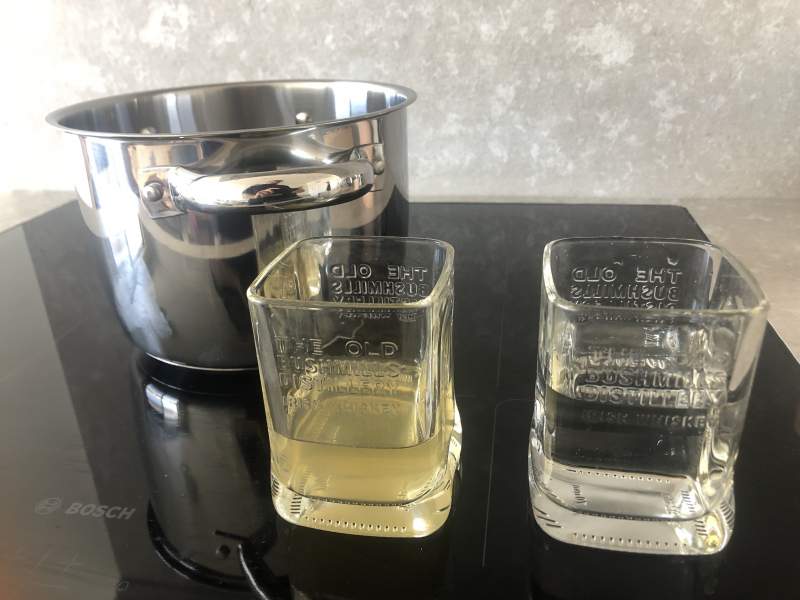
- Bring the pot to a boil and let the residue dissolve in the solution. The acidity of the vinegar will help to remove the chalky white stains from the cooking surface of your pan or pot.

- Leave boiling, on medium-high heat, for about 5 minutes.
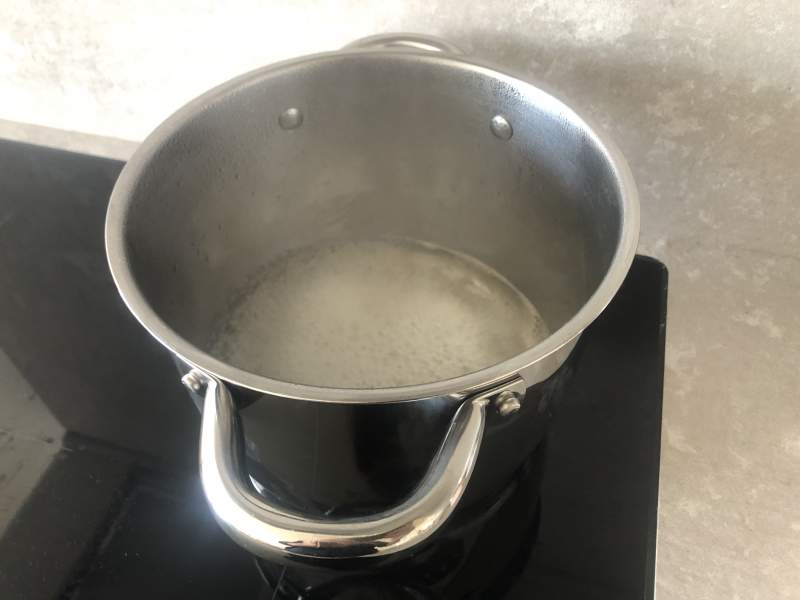
- Turn off the heat and let your pan or pot cool down.
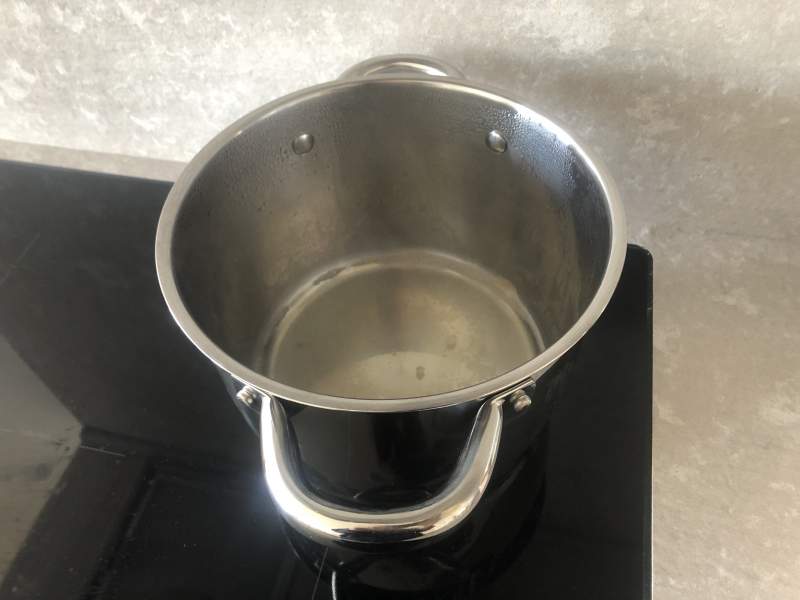
- Clean by hand in soapy water and with a soft sponge.
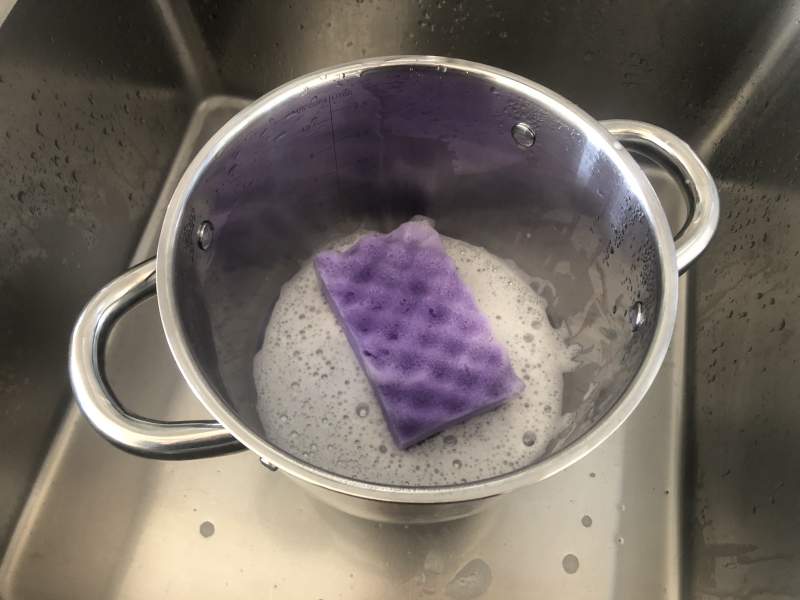
- A little scrubbing here and there, and the stains are gone!

Why Do White Spots Appear on Stainless Steel Cookware?
The tap water you drink and cook with contains minerals like calcium, magnesium, sulfates, others. Depending on where you live and what water source your water comes from, your water can be softer (containing less minerals) or harder (containing more minerals).
When you heat water in a pan or pot, the water evaporates. However, the minerals it contains fall to and build up on the bottom of your cookware. When heated, calcium decomposes to form insoluble calcium carbonate, also known as limescale.
The simplest and most effective way to dissolve limescale is with a 1:3 solution of, respectively, vinegar and water. For the best results, use 5% white vinegar or apple cider vinegar, both of which are edible vinegars commonly found at homes and carried by most supermarkets.
A solution of vinegar and water helps to dissolve limescale thanks to its acidity. Acids react with limescale by dissolving it and producing soluble metal salts which you can simply wash away.
